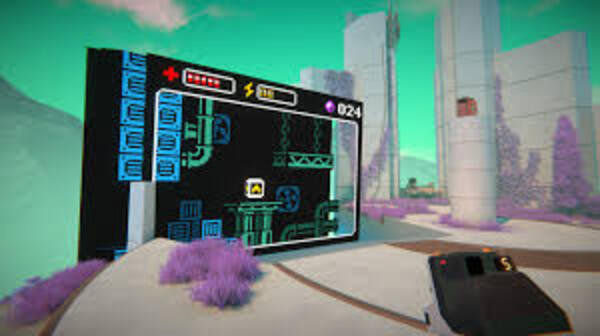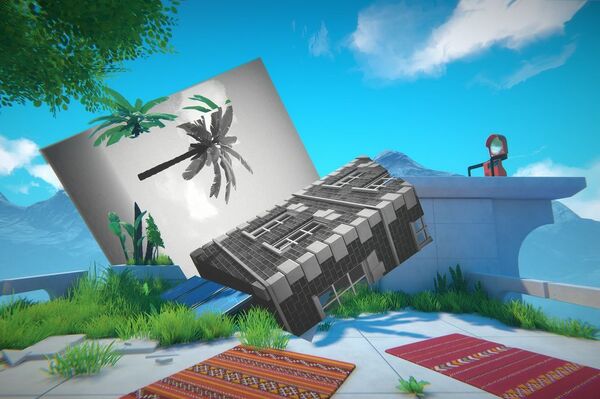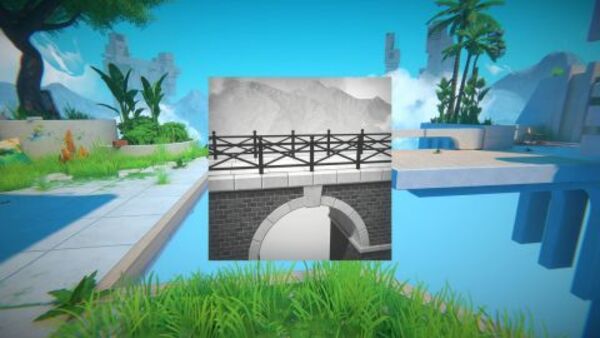Introduction
Viewfinder is a unique and innovative puzzle game that challenges players to solve mind-bending puzzles using perspective. Developed by Sad Owl Studios, the game allows players to manipulate the environment by taking photographs and using them to alter reality. This mechanic creates a fresh and engaging puzzle-solving experience, but it also raises a deeper question: How does the game’s design of perspective-based puzzles shape player engagement and satisfaction? In this article, we will delve deeply into the specific issue of puzzle design in Viewfinder, exploring how perspective is not just a tool but the core of the game’s experience.

1. The Core Mechanic: Manipulating Reality with Photos
The central mechanic of Viewfinder—using photos to alter the world—sets it apart from other puzzle games.
How It Works
In Viewfinder, players can take photographs of their surroundings. These photos can then be placed into the game world to create new paths, open doors, or bypass obstacles. The twist lies in the fact that whatever is depicted in the photo becomes reality when placed, altering the environment according to the player’s perspective.
Why Perspective Matters
The puzzle solutions are entirely dependent on the player’s ability to understand and manipulate perspective. Unlike traditional puzzle games that rely on logic or physics, Viewfinder asks the player to think in terms of spatial relationships, making each solution feel like a revelation when the pieces click into place.
2. The Challenge of Teaching Perspective to Players
One of the biggest challenges in Viewfinder is teaching players how to think in perspective terms.
Learning Through Play
The game does an excellent job of gradually introducing its mechanics. Early puzzles are simple and serve to familiarize players with how photos can change the world. Over time, the complexity ramps up, pushing players to combine photos, manipulate angles, and think critically about how the environment can be reshaped.
Visual Cues and Guidance
To prevent players from feeling overwhelmed, Viewfinder uses visual cues such as highlighted objects and clear level design to guide the player’s thinking. These subtle nudges help players understand how to solve puzzles without feeling hand-held, keeping the satisfaction of discovery intact.
3. The Role of Creativity in Puzzle Solving
Unlike many puzzle games that have fixed solutions, Viewfinder encourages creativity and experimentation.
Multiple Solutions
Many of the puzzles in Viewfinder can be solved in multiple ways. This freedom allows players to approach challenges based on their unique perspective and thought process. For example, a player might choose to rotate a photo to create a bridge or use it to open a previously blocked passage.
Rewarding Innovation
The game rewards out-of-the-box thinking by offering more creative and intricate puzzles as the player progresses. This design approach keeps the gameplay fresh and engaging, as players are constantly encouraged to experiment and push the boundaries of what they think is possible.
4. Cognitive Load: Balancing Difficulty and Engagement
One of the key issues in Viewfinder is how it manages the cognitive load on players.
Balancing Complexity
As the puzzles become more intricate, players must juggle multiple elements at once, such as the angle of the photo, the environment, and the potential consequences of their actions. The game walks a fine line between challenging players and overwhelming them, making sure that each puzzle is challenging but never frustratingly so.
Pacing the Experience
Viewfinder paces its difficulty curve carefully. It introduces new mechanics gradually, giving players time to digest and master each before moving on to more complex tasks. This pacing helps reduce cognitive overload and maintains the player’s sense of accomplishment.
5. Perspective as a Tool for Storytelling
Beyond its mechanical function, perspective in Viewfinder also plays a key role in storytelling.
Narrative Integration
The world of Viewfinder is steeped in mystery, and the use of perspective ties into the game’s narrative. As players manipulate reality, they uncover hidden stories, clues, and lore that flesh out the world. This environmental storytelling adds depth to the puzzle-solving experience, making each new discovery feel meaningful.
Player Agency in Shaping the World
The ability to reshape reality puts a significant amount of control in the player’s hands. This agency allows players to feel like active participants in the story, rather than passive observers. The choices they make in solving puzzles can affect how they perceive the game’s world and narrative.

6. Visual Design: Creating Puzzles that Make Sense
The success of Viewfinder’s puzzles heavily relies on its visual design.
Clarity of Design
Each level is carefully crafted to ensure that players can easily understand the layout and mechanics. Visual clarity is essential in a game where perspective manipulation is the core mechanic, as players need to be able to quickly assess the environment and how their actions will change it.
Aesthetic Consistency
Despite the complexity of the puzzles, Viewfinder maintains a consistent aesthetic that aids in puzzle-solving. The game uses contrasting colors, clear lines, and distinct environmental features to guide players toward potential solutions without overwhelming them with visual noise.
7. Player Frustration: How the Game Avoids It
A common issue in puzzle games is player frustration, but Viewfinder addresses this effectively.
Undo Feature
To prevent players from feeling stuck or punished for experimenting, Viewfinder includes an undo feature that allows players to rewind their actions. This reduces the fear of failure and encourages experimentation, as players know they can easily reverse a mistake.
Gradual Learning Curve
The game’s gradual difficulty progression helps players feel like they’re learning and improving over time. By introducing new mechanics slowly and building on previous concepts, Viewfinder ensures that players are always equipped with the tools they need to solve puzzles.
8. The Puzzle-Reward Loop: Keeping Players Engaged
One of the most satisfying aspects of Viewfinder is its puzzle-reward loop.
Sense of Accomplishment
Each solved puzzle provides a strong sense of accomplishment. The game’s unique mechanics make every solution feel like a personal achievement, especially when players solve puzzles in creative ways.
Unlocking New Areas
Solving puzzles often leads to unlocking new areas, which provides both a narrative and gameplay reward. These new areas often introduce fresh mechanics or storytelling elements, keeping the player engaged and motivated to continue exploring.
9. The Challenge of Designing Perspective Puzzles
From a game design standpoint, creating perspective-based puzzles is a unique challenge.
Ensuring Playability
Designers must ensure that puzzles are not only solvable but also intuitive enough that players can figure them out without frustration. This requires careful planning and playtesting to ensure that players have enough information to solve each puzzle without feeling confused or lost.
Balancing Complexity and Simplicity
The challenge for designers is to create puzzles that are complex enough to be interesting but not so difficult that they alienate players. Viewfinder achieves this balance by using a variety of puzzle types and gradually increasing the complexity over time.
10. Future Implications for Puzzle Design in Games
The success of Viewfinder’s perspective-based puzzles could influence future puzzle games.
Potential for Expansion
The innovative use of perspective in Viewfinder opens the door for other games to explore similar mechanics. Developers could build on this concept, creating even more complex and engaging puzzles that challenge players in new ways.

Impact on Puzzle Game Design
Viewfinder sets a new standard for puzzle game design by combining mechanics with storytelling and player creativity. Future games in the genre may draw inspiration from its ability to seamlessly integrate these elements, creating a more immersive and rewarding puzzle-solving experience.
Conclusion
Viewfinder takes a bold approach to puzzle design by centering its mechanics around perspective manipulation. This not only challenges players in unique ways but also enhances the game’s narrative and engagement. By mastering the art of teaching perspective, encouraging creativity, and managing cognitive load, Viewfinder creates an immersive puzzle experience that pushes the boundaries of what puzzle games can achieve.


